
For the 3 rd time Anna of Anna’s Cool Finds asked for A taste of terroir.
I already mentioned that I live in the northernmost Bundesland of Germany, Schleswig-Holstein: The land between two seas, between the Baltic Sea and the North Sea. Until 1864 the northern part Schleswig belonged to Denmark, where the writer and lyricist Theodor Storm was born. One of his favourite dishes were Förtchen, in Danish Æbleskiver. He liked the German version so much, that he wrote a nursery rhyme about Futtjes, low German for Förtchen.
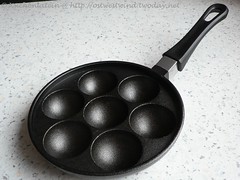
You need a special pan to bake Fö;rtchen. My grandmother had a pan with 7 indentations for a gas stove, my mother in law has a large pan for a coal-fired stove like this. Meanwhile you can buy pans with plain bottoms for electrical stoves. I borrowed this pan for baking Förtchen
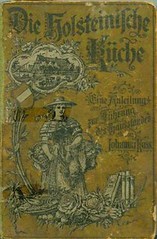
There are different batters for Förtchen in all regions of Schleswig-Holstein. This cookbook from 1920 has 5 different recipes for Förtchen. The book recommends a mixture of lard and butter. My grandmother always baked them with yeast and raisins, so did I.
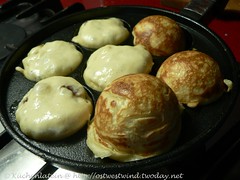 |
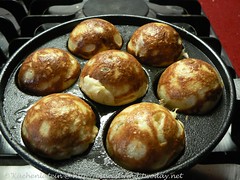 |
The Förtchen are done if they look inside like this.
Link to the Æbleskiver recipe in German language

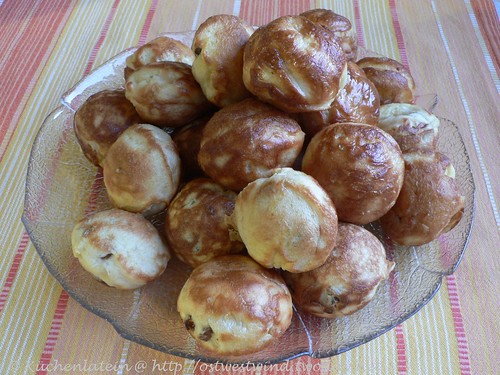
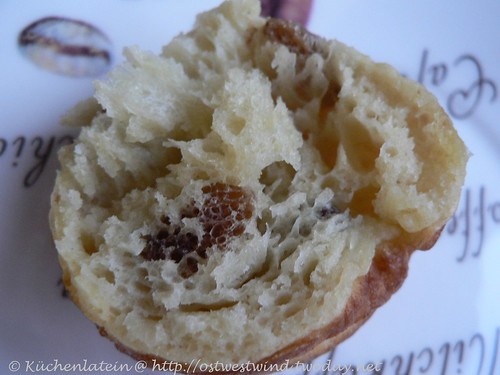
I’ve been wanting to buy one of those pans. They look great!
Does anyone see this page anymore? The old book you showed looks fascinating! My family came from Schleswig-Holstein, several generations back, and my maiden name is Holst. The family has a recipe similar to this one, that they call “fürden”… I assume that their name is a corruption of the original word. They also make a pfeffernüsse recipe that contains black coffee and molasses, as well as various spices… It’s not like any other pfeffernüsse recipe I’ve seen, and I have long wondered where it came from. I’m also curious about cookie and bread history, and what my ancestors might have made before white sugar and baking powder and white flour became common.
Hello Holly,
I make Holsteiner Pfeffernüsse without coffee but with molasses and lots of spices. They are made with potash (potassium carbonate) and „deer horn salt“, that is ammonium bicarbonate. Comes this recipe close to yours?
YUM! Interesting that this uses yeast!